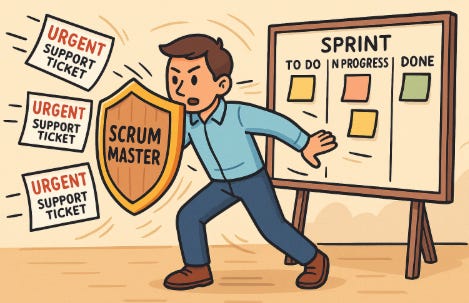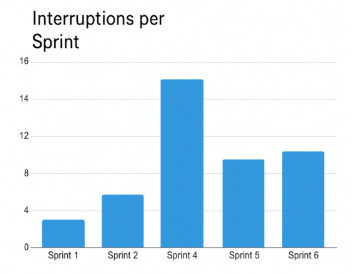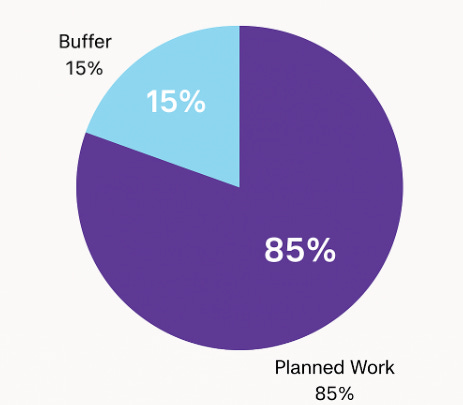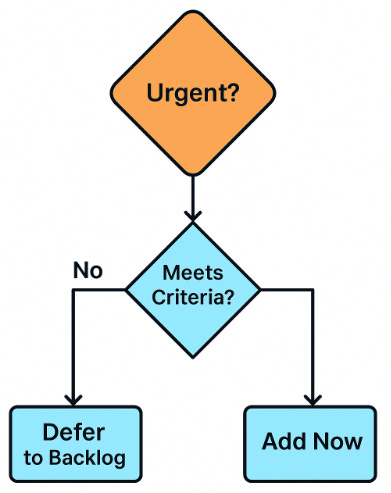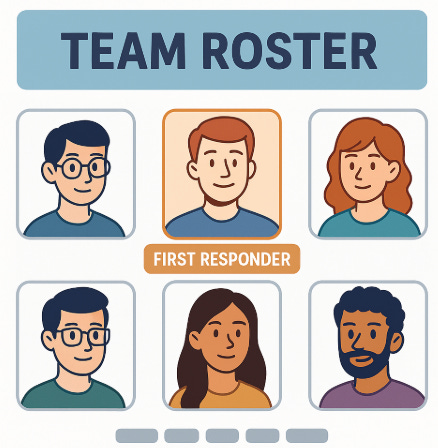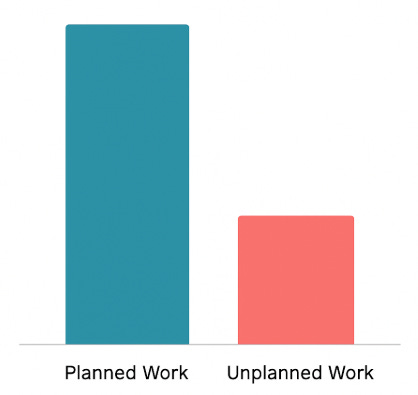5 Practical strategies to protect Sprint when Support or Ops keeps interrupting
Balancing Unplanned Work Without Breaking Your Sprint Flow!
The Situation
It was Day 3 of the Sprint.
We were cruising. Stories were in progress, dependencies cleared, morale was high.
Then, I saw it — a Support – URGENT ticket flashing on Jira.
One hour later, another.
Then another.
By the end of the day, 40% of the team was firefighting.
By the end of the week, our sprint goal was a memory.
And it wasn’t a one-off. This became the pattern.
The Ops team and Support team weren’t the villains — they were just responding to their pressures.
The problem? Our work was getting chopped into tiny, unfocused chunks.
I realised:
Ignoring them would damage relationships.
Accepting everything would destroy predictability.
So, I had to find a middle ground — one that protected our focus while honouring their urgency.
Here’s exactly what I did, the tools I used, the resistance I faced, and the outcomes that followed.
Strategy 01: Surface the Pattern with Data
What I Did:
For 3 sprints, tracked every mid-sprint request:
Who raised it
Type of issue
Time taken to resolve
Created a simple interruption log on a shared Confluence page.
Tagged them visually on our sprint board under a separate "Unplanned Work" swimlane.
Challenge: Support leads argued, “Everything we send is critical!”
How I Overcame It: Sat with them and defined what “critical” really meant: production outage, security risk, compliance breach. Anything else → added to backlog.
Outcome: Leadership finally saw the trend and stopped saying, “Your velocity is low,” without understanding why.
Tip: Without data, you sound defensive. With data, you sound accountable.
Strategy 02: Plan a Capacity Buffer
What I Did:
During sprint planning, blocked 10–15% of capacity as Ops/Support buffer.
This space was only used if a genuine urgent request came in.
Challenge: Managers feared “reduced output” would be seen as underperformance.
How I Overcame It: Reframed it as increasing reliability. With a buffer, we delivered more consistently instead of missing commitments.
Outcome: Less rollover work. Team stress levels dropped.
Tip: Always present a buffer as a predictability improvement measure, not as “extra free time.”
Strategy 03: Negotiate a Triage Process
What I Did:
Co-created a triage checklist with Support/Ops lead:
Impact on customers
Financial/reputation risk
Legal/compliance urgency
Only if 2+ boxes were ticked, it came mid-sprint.
Challenge: People tried bypassing it.
How I Overcame It: Politely redirected them back to the process, with a friendly line: “If it meets these criteria, we’ll stop current work immediately. If not, it’s queued for next sprint.”
Outcome: Requests reduced by almost 40% within two sprints.
Tip: Don’t design this process for them — design it with them. Shared ownership means fewer arguments later.
Strategy 04: Assign a First Responder
What I Did:
Nominated one rotating team member each sprint to be the First Responder.
That person handled urgent requests while others stayed focused.
Challenge: Risk of burnout for the responder.
How I Overcame It:
Rotation every sprint
Strict timeboxing on interruptions
Recognition in sprint review for their firefighting work
Outcome: The rest of the team’s flow was preserved, and the responder got leadership visibility for problem-solving skills.
Tip: Pick someone who’s naturally calm under pressure for the first rotation — it sets the tone.
Strategy 05: Make It Visible to Leadership
What I Did:
During Sprint Review, showcased “Planned vs. Unplanned” work side by side.
Framed it as, “We’re delivering value and handling urgent issues — here’s the balance we’re working with.”
Challenge: Worried about being seen as complaining.
How I Overcame It: Paired data with solutions — instead of “We had 8 interruptions,” I said, “We had 8, but our buffer and triage process kept delivery on track.”
Outcome: Leadership respected that we weren’t hiding problems, and started shielding us from low-priority interruptions.
Tip: Never present a problem without your mitigation strategy.
Your Next Action Steps:
Start an interruption log today — don’t wait for “enough” data.
In your next sprint planning, reserve a visible buffer.
Schedule a 20-min sync with Support/Ops to co-create triage rules.
Test the First Responder rotation for one sprint — measure impact.
Bring leadership into the loop at review — with both numbers and improvements.
Ready to Turn These Strategies into Action?
Join the Scrum Master Bootcamp!
Want to put these strategies into action and experience the impact firsthand? Join my Scrum Master Bootcamp, where you’ll work through these exact challenges and build the skills needed to drive real value in your team. This isn’t just theory — it’s hands-on practice that will transform how you manage leadership’s expectations.
👉 Click to explore more and start mastering the tools and techniques that can change the way you work as a Scrum Master.
Don’t just learn — experience the difference in real time.
Why Subscribe
Each week, I share battle-tested strategies, messy lessons, and practical tools that help Scrum Masters, Product Owners, and change agents like you make sense of chaos — without sugar-coating it.
If you found this useful, subscribe.
This isn’t theory. It’s real work, made a little easier — one step at a time.
Thanks for reading Strategy For Success! Subscribe for free to receive new posts and support my work.
📝 Your Feedback Matters!
I have started writing this newsletter and your feedback will help me improve it further. You may leave your feedback in Comment on how can I make this newsletter valuable for you.
“Just because I understand it, does not mean everyone understands it. And just because I do not understand it, does not mean no one understands it.”
Anand Pandey
Thanks for reading Strategy For Success! Subscribe for free to receive new posts and support my work.


